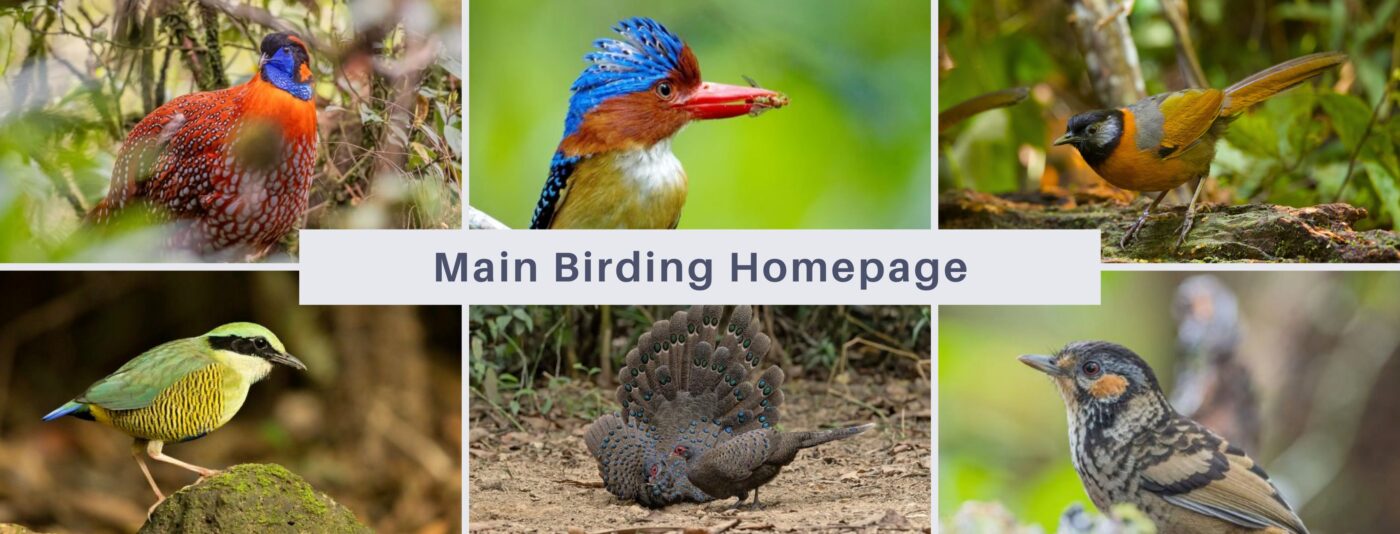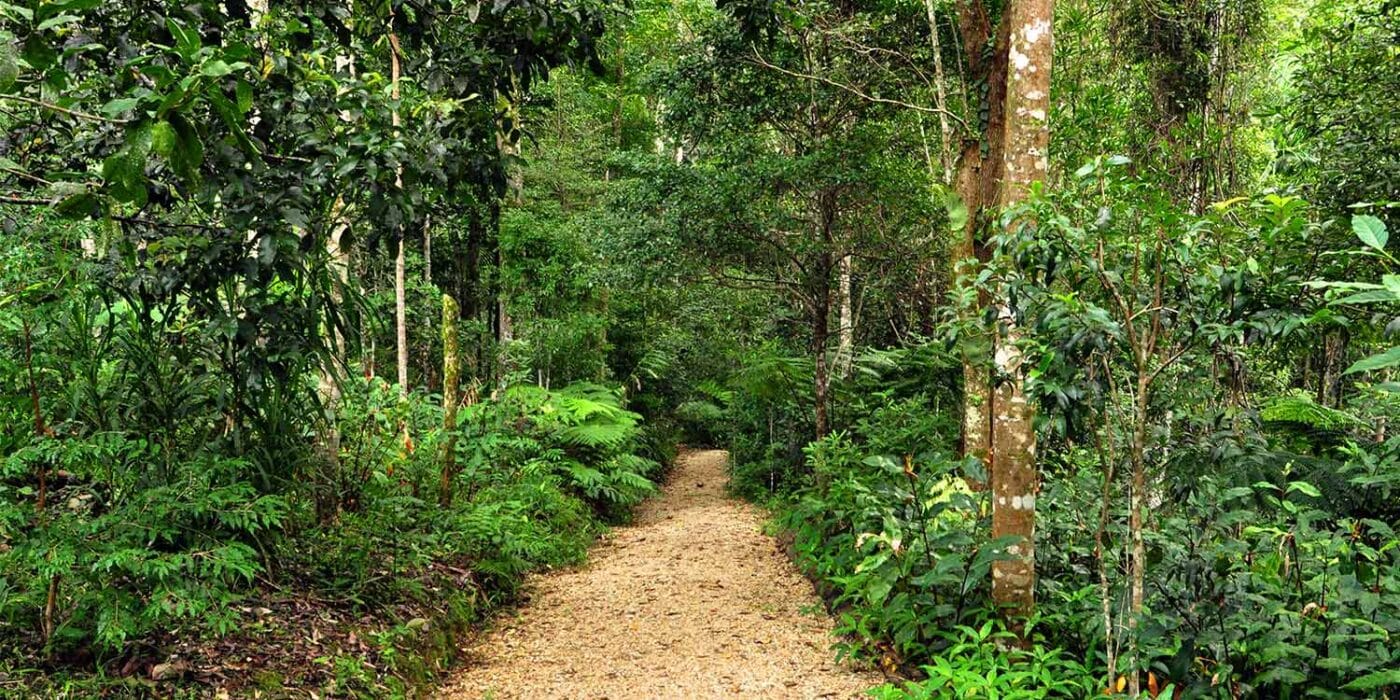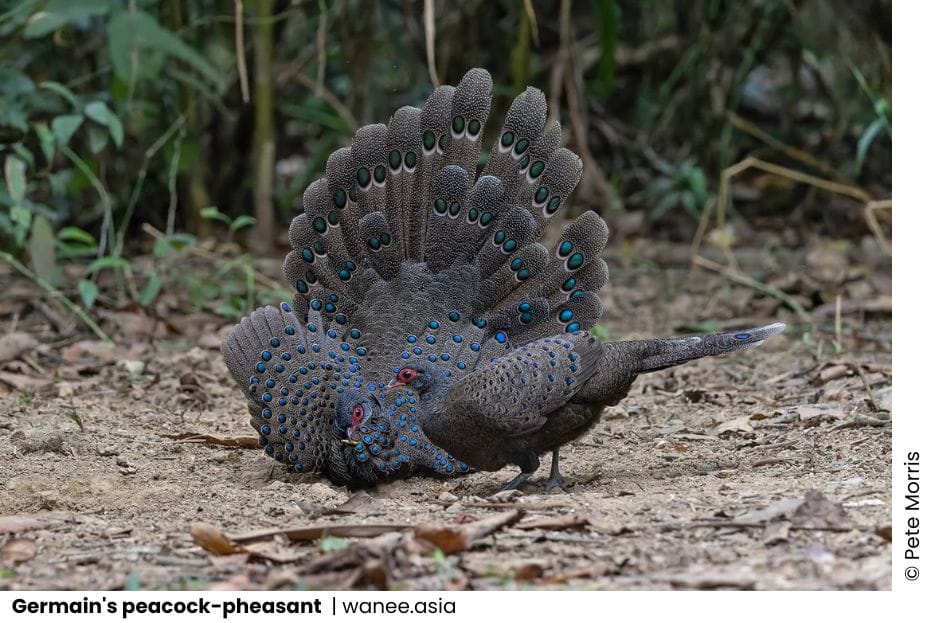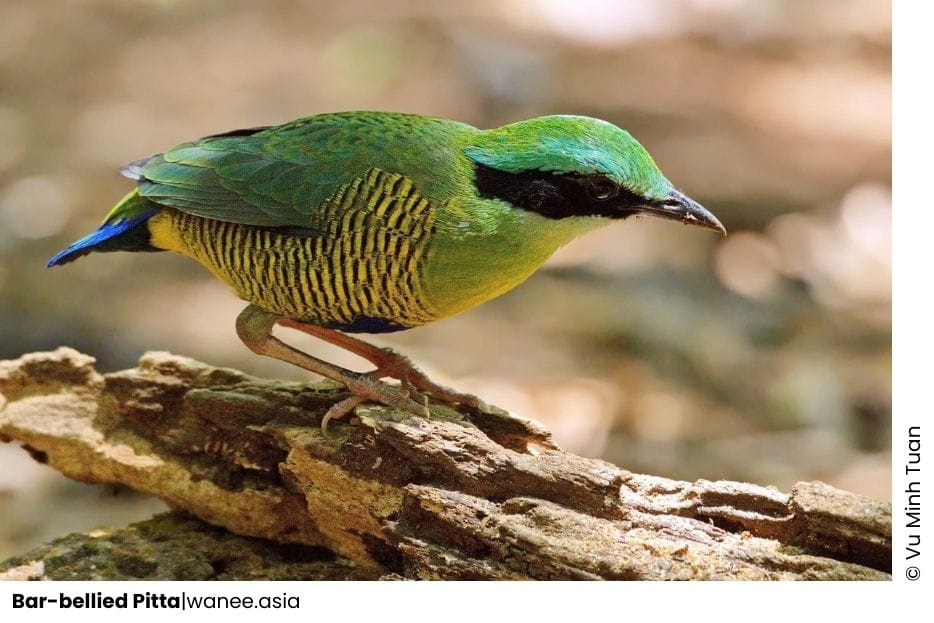Ma Da Forest, a birdwatcher’s haven in the heart of Vietnam, is a mix of dense forests and peaceful wetlands. The rich ecosystem is home to a wide variety of birds with unique calls and colorful feathers. More than just spotting birds, it’s a chance for you to feel more and connect closely with nature.

Location and Geographical Features
Ma Da Forest is located in southern Vietnam, within Dong Nai Province. It is part of the larger Dong Nai Culture and Nature Reserve, a protected area for its rich biodiversity and pristine beauty. The forest is not far from Ho Chi Minh City, just about 1.5 hours by cars, making it an accessible destination for nature enthusiasts and birdwatchers.
Along with a mix of dense tropical forests, rolling hills, and winding rivers, the forest’s wetlands and open grasslands add to the variety of habitats, creating a perfect home for many plant and animal species. The area’s diverse terrain and water sources make it an important ecological zone, supporting a wide range of wildlife, including rare and endangered birds.

Diverse Habitats and Ecosystems
Ma Da Forest stands out as a local birdwatcher’s haven, with over 200 species of birds calling it home. The forest’s diverse ecosystems attracts both resident and migratory bird species to arrive, from small, colorful songbirds in the trees to large raptors gliding in the sky.
Notable and Endemic Bird Species
The forest is home to the rare and enchanting Germain’s Peacock-Pheasant, showcasing its stunning display of colors during courtship rituals.

Additionally, birders may have chances to encounter the charismatic Orange-necked Partridge, an endemic species that calls Ma Da Forest its home. Other notable species include the colorful Great Slaty Woodpecker, the striking Blue-rumped Pitta, and the elusive Bar-bellied Pitta. These unique feathered inhabitants contribute to the rich birdlife of the forest, making it an exciting place for both experienced birders and nature lovers to explore.
Inside the forest, several birding hotspots await you to explore. One of the best is the Transect Trail, where different habitats attract many kinds of birds. As you go on this trail, you may encounter stunning residents including the Orange-breasted Trogon and the Collared Falconet. Another notable hotspot is the Bamboo Grove, where the towering bamboo stands create a unique environment for the Orange-breasted Trogon and the Siamese Fireback. The Forest Edge is yet another hotspot where the Golden-fronted Leafbird and the Blue-winged Pitta can be spotted.

Best Time for Birding in Ma Da Forest
The best time for birding in Ma Da Forest is influenced by the seasonal variations in bird populations and behaviors. during the cooler months, typically from November to March, the forest comes alive with the arrival of migratory birds. This period offers a great opportunity to spot a diverse range of migratory species, including the colorful Asian Paradise Flycatcher and the elegant Siberian Rubythroat.
As the temperatures rise and the forest transitions into spring and summer, resident birds become more active in their breeding activities. This is a delightful time to spot species like the Great Slaty Woodpecker and the Dollarbird as they engage in their breeding rituals.
Overall, the months of November to April are considered the best time for birdwatching in Ma Da Forest, when the forest is abuzz with captivating birdlife.
Tips and Techniques for Birding in Ma Da Forest
When birding in Ma Da Forest, preparation and patience are key to making the most of your experience. Here are some tips to ensure a rewarding adventure:
- Essential Gear: A quality pair of binoculars is essential for clear, close-up views of distant birds. Bring along a field guide focused on Vietnamese bird species to help with identification.
- Dress for Success: Wear comfortable, weather-appropriate clothing and footwear that blends into the environment. Neutral colors help you remain unobtrusive, and sturdy shoes will make navigating the trails easier.
- Move with Care: To avoid startling the birds, move slowly and quietly along the trails. Avoid loud noises or sudden movements that could send birds flying off before you get a good look.
- Listen for Calls: Pay attention to bird calls and songs, which can guide you to different species. Many birds are more easily heard than seen, so listening carefully is a valuable tool in locating them.
- Keep Records: Bring a notebook or camera to record your sightings. Taking photos or notes can help you identify the birds later and remember your encounters.
- Pre-Trip Research: Familiarize yourself with the common species found in Ma Da Forest. Understanding which birds you’re likely to see increases the chances of spotting them and deepens your appreciation of their behaviors.
- Be Patient: Birding takes time. Stay patient, observe the surroundings, and enjoy the process of discovery. Often, the best sightings come when you least expect them.
By following these simple strategies, you’ll enhance your birdwatching experience in Ma Da Forest, creating memories of a truly immersive connection with nature’s winged wonders.
Conservation and Protection of Ma Da Forest
Preserving Ma Da Forest and its incredible birdlife is essential for maintaining the biodiversity that thrives within this unique ecosystem. Conservation efforts are key to ensuring the forest remains a safe haven for its avian species and other wildlife. Through collective action, including local authorities, environmental organizations, and community involvement, steps are being taken to safeguard this treasure.
Key conservation initiatives include:
- Habitat Restoration and Reforestation: Efforts to restore degraded habitats and expand forest cover are critical to supporting the forest’s biodiversity. Reforestation projects aim to improve the quality of habitats for birds and other species, ensuring they have the resources needed to thrive.
- Protected Areas: Establishing protected zones within the forest helps prevent illegal logging, hunting, and other human activities that could negatively impact the ecosystem. These areas serve as sanctuaries for wildlife, providing safe spaces for birds to nest, forage, and roam without disturbance.
- Community Engagement: Involving local communities is a vital part of the conservation process. Educational programs help raise awareness about the importance of Ma Da Forest and its birdlife, fostering a culture of stewardship among the local population. By encouraging sustainable practices, locals can contribute to the forest’s preservation while also benefiting from ecotourism opportunities.
- Visitor Awareness: Educating visitors about the significance of Ma Da Forest and the role they play in its conservation is crucial. Responsible behavior, such as adhering to trails, refraining from disturbing wildlife, and supporting eco-friendly businesses, contributes to the long-term health of the forest.
By supporting these conservation efforts, both through active participation and responsible tourism, we can ensure that Ma Da Forest remains a vibrant, thriving ecosystem for future generations to explore and enjoy. Together, we can make a difference in preserving this invaluable natural heritage.
Personal Birding Experiences and Recommendations
Every birding trip in Ma Da Forest brings a new discovery of Vietnam wonders. Among the highlights, with its striking feathers, the elusive Crested Argus is also a rare sight, while the White-rumped Shama can be spotted when moving gracefully through the trees. Whether it’s a quick glimpse or a closer look, each moment adds to the beauty of this diverse habitat.
Based on our personal experiences, we would like to recommend a few specific spots and trails within Ma Da Forest consistently providing great opportunities for birding. The trails leading to the freshwater lakes and streams often offer encounters with water-loving bird species, such as the oriental darter and the Kingfishers. The forest’s dense canopy and understory also provide safe haven for smaller bird species, including the Asian fairy-bluebird and the Pale-headed woodpecker. In addition, we have found that many bird species become more active in the early mornings and late afternoons, suitable for different birding activities.
For those seeking a truly immersive experience, we recommend exploring the trails that wind deeper into the forest. These trails often lead to the spots where rare and elusive bird species can be observed, such as the Siamese fireback and the Dusky Broadbill. Patience and quiet observation are key in these areas, as the forest’s inhabitants may require a more careful approach to avoid disturbance.
Ma Da Forest in Vietnam is believed to be a birdwatcher’s haven, where diverse habitats and vibrant wildlife await discovery. To make the most of your birding experience, bring binoculars, a field guide specific to the region, and wear comfortable, nature-friendly clothing. It is crucial to respect the natural environment and follow local guidelines to ensure the protection of this unique ecosystem.
Whether you’re a seasoned birder or a beginner, you can feel and experience Ma Da Forest with all of your sense. Every step in this rich habitat deepens our understanding of wildlife and the importance of conservation. Plan your visit, experience the wonder of Ma Da Forest, and contribute to preserving this avian sanctuary for future generations.
Vietnam Birding Tours to Ma Da
Across Vietnam, conservation efforts are expanding—from reforestation projects to wildlife rescue and habitat protection. At WANEE, we believe that the more we appreciate nature, the more we’ll want to protect it. That’s why our tours are designed to inspire a deeper love for wildlife and a stronger commitment to conservation. While trying harder every day to protect the balance of nature, our wildlife tours give tourists the chance to explore Vietnam’s natural beauty, understand how different habitats connect, and take action to protect them.
Scheduled Wildlife Tours
Tailored Wildlife Tours
Click here to see more tailored tour options
Visit our sites:
– Facebook: WANEE Vietnam (Wild and Nature Exploring)
– Instagram: WANEE Vietnam and WANEE Kids hub
Are you looking for Wildlife Tours in Vietnam?
WANEE VIETNAM is your go-to destination for "Wildlife Tours in Vietnam", specializing in Birding, Primate Watching, Herping, Photography Tours and Educational Tours led by our expert guides.Hot-spot for Birding in Vietnam
all birding in hot-spot informative info [updated Jan 2023]
Nr. Nature reserve; Np. National Park; mt. Mountain
Crocodile Trail – The Best Birding Trail in Cat Tien National Park
If you’re a birder or nature photographer planning a trip to Vietnam, few places offer [...]
Cong Troi Trail – Top 1 Dalat Plateau Birding Trail Experience
If you’re a birder or nature photographer planning a trip to Vietnam’s Central Highlands, the [...]
How to Identify the Greater Sand Plover, Tibetan Sand Plover and Siberian Sand Plover
Identification Differences within the Sand Plover Complex: The sand plover group, which was traditionally divided [...]
Highlights of Cat Tien National Park Reptiles and Amphibian Endemics
Spanning over 71,350 hectares of tropical forests, grasslands, and wetlands, Cat Tien National Park is [...]
Highlights of Cat Tien National Park Mammals in a World Biosphere Reserve
In addition to reptiles and birds, Cat Tien National Park is also rich in mammals, [...]
Kontum Plateau Endemic and Highlight bird
Kontum Plateau Endemic And Highlight Bird species like Chestnut-eared Laughingthrush and top birding routes while [...]